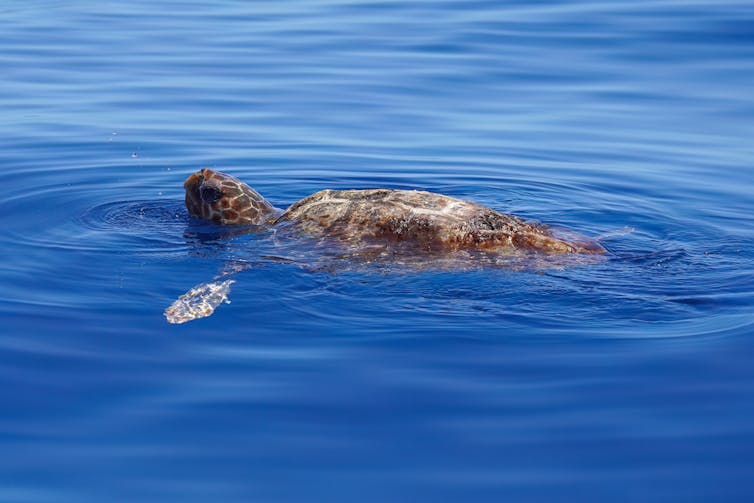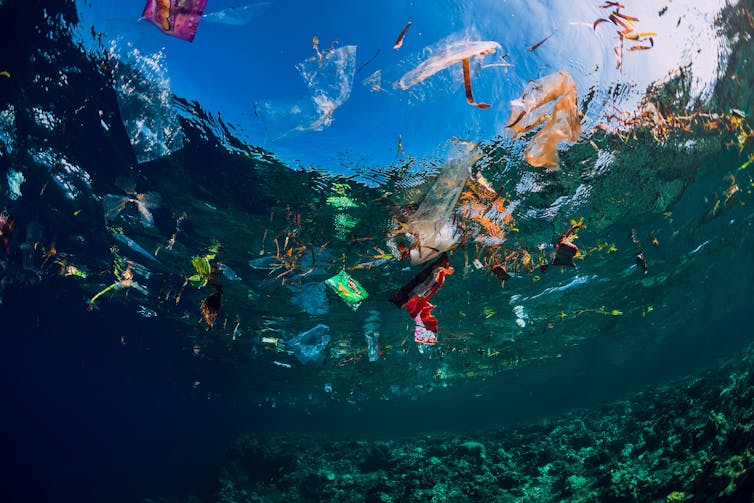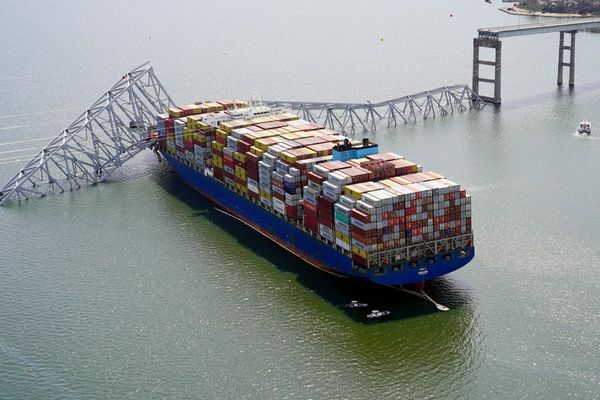
Thousands to millions of tonnes of plastic enter the ocean annually, but where they end up is poorly understood.
Scientists have been working to assemble the pieces of the puzzle for years, including estimating the size of the reservoir of plastic on the ocean surface, in the water column and in the deep ocean. However, marine animals are often overlooked.
All animals can be reservoirs of plastic pollution, but to understand just how much ocean plastic pollution is stored in ocean life, we used sea turtles as a case study.
Sea turtles ingest plastic debris of a variety of shapes and sizes, which can include pre-production pellets, foam, plastic bags, sheets, fishing gear and food wrappers. Their ingestion of plastic can come with a slew of negative impacts, some of which include starvation, emaciation and damage to the gut lining. Sea turtles can also become entangled in plastic nets and rope.
Vulnerable species
We focused on sea turtles because we know they’re impacted by plastics and are vulnerable to a changing ocean. Six out of the seven species of sea turtles are categorized as either vulnerable, endangered or critically endangered by the International Union for Conservation of Nature.
To estimate how much plastic resides within sea turtles, we built a model using data on plastic ingestion in sea turtles and factors we suspected may predict how much plastic a turtle eats. That includes geographical, socio-economic and ecological factors.
We estimated the size of the global reservoir for female green turtles because we had the most data for that group.
We estimate that approximately 60 tonnes of plastic debris reside within female green turtles at any given time. This is roughly the equivalent of a garbage truck’s worth of plastic pollution.
Based on our findings, we also predicted that an individual green turtle can contain up to 26.4 grams of plastic on average, the equivalent mass of 10 ping pong balls.
Predicting ingestion
Where a turtle lives matters. We found that sea turtles who forage closer to the equator are more likely to accumulate plastic debris. Furthermore, turtles that forage nearby countries with a lower socio-economic status are likely to eat more plastic, as socio-economic status is related to waste management.
We also found that species-specific characteristics, including body size and foraging strategy — where and how a turtle identifies and retrieves food — play a role.

For instance, loggerhead turtles are carnivores and forage in the open ocean for the first seven to 15 years of their lives before migrating to nearshore coastal areas.
In contrast, leatherback turtles spend most of their lives in the open ocean and feed on a diet of soft-bodied prey, including jellyfish and salps. This makes it easy for them to mistake balloons as food.
Green turtles, on the other hand, primarily feed on algae and sea grasses, spending only three to five years in the open ocean before relocating to shallow coastal areas where they remain for the rest of their lives.
These different behaviours of sea turtles, along with their body size, influence where and how turtles are exposed to plastic debris and how much plastic can fit inside a turtle’s stomach at any given time.
Understanding what factors predict plastic ingestion is important for pinpointing which species are most at risk: we found that leatherback turtles have the greatest propensity for ingesting plastic debris.
Future work
Sea turtles are impacted by a changing ocean, and our plastic waste is part of that change. The relatively consistent load of plastic in sea turtles raises questions about risk.

Relevant to our study, the next step is to try to understand how the plastic reservoir varies among other species. What is the total amount stored in global marine animals at any one time?
In addition, could sea turtles and marine animals in general be transporting plastic debris around as they move, essentially acting as conveyor belts of plastic throughout the ocean?
Call to action
In order to answer these questions, we need more data for sea turtles and other species. We call for further monitoring of sea turtles to improve future modelling efforts and to inform risk. We also call for further monitoring of other species, and recommend standardized reporting practices and greater data transparency.
We hope our findings demonstrate the value of monitoring to address knowledge gaps pertaining to the cycling of plastic in the environment. This knowledge, in turn, could help inform a Global Plastics Treaty.
We also hope our work can inform direct actions to protect sea turtles from the effects of plastics, and reduce the amount of plastic entering the ocean.
Xia (Alice) Zhu receives funding from the Banting Postdoctoral Fellowship.
Chelsea Rochman receives funding from NSERC, ECCC, DFO.
Matthew Mazloff receives funding from NASA, NOAA, NSF, UCSD.
This article was originally published on The Conversation. Read the original article.







